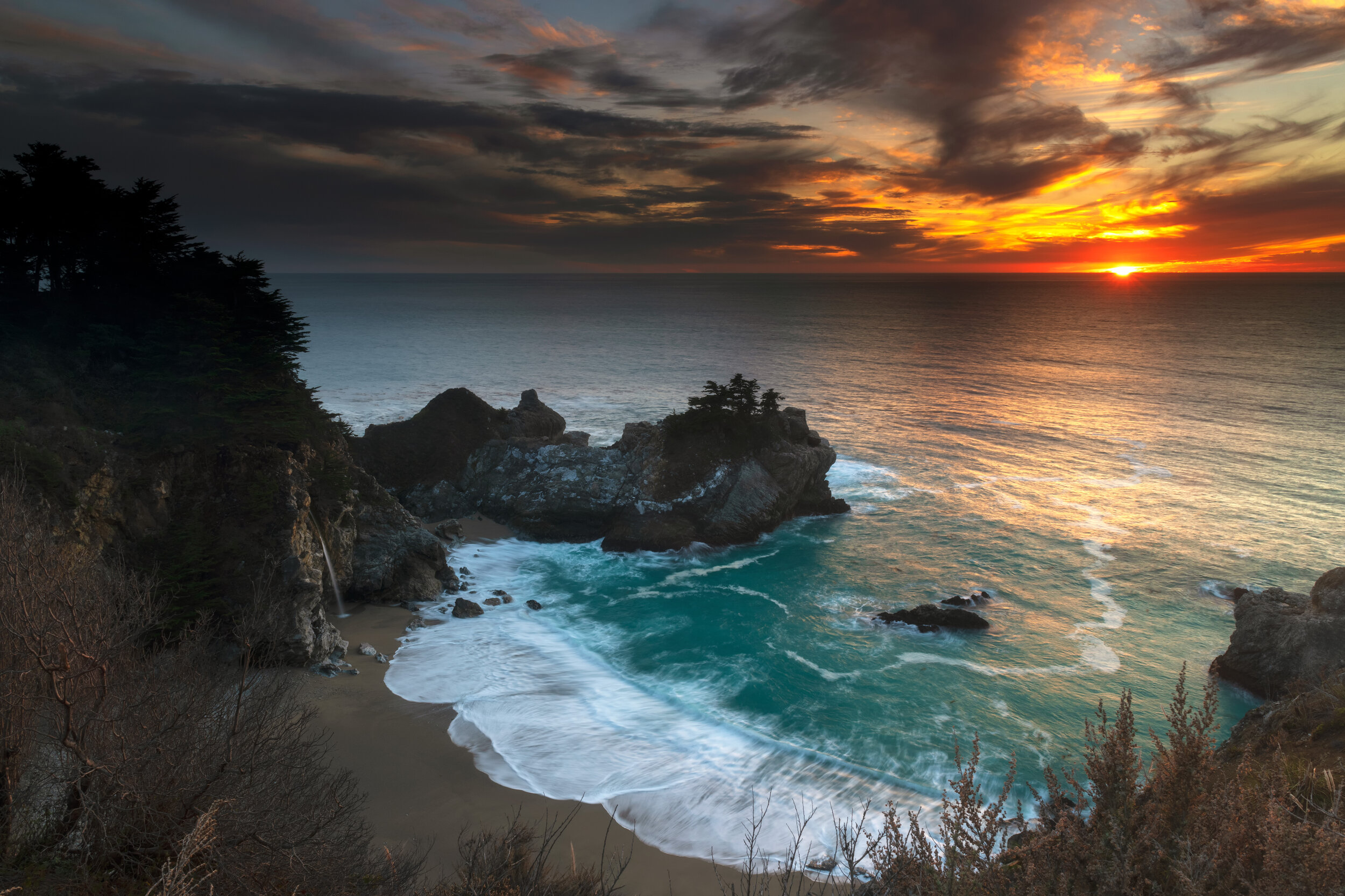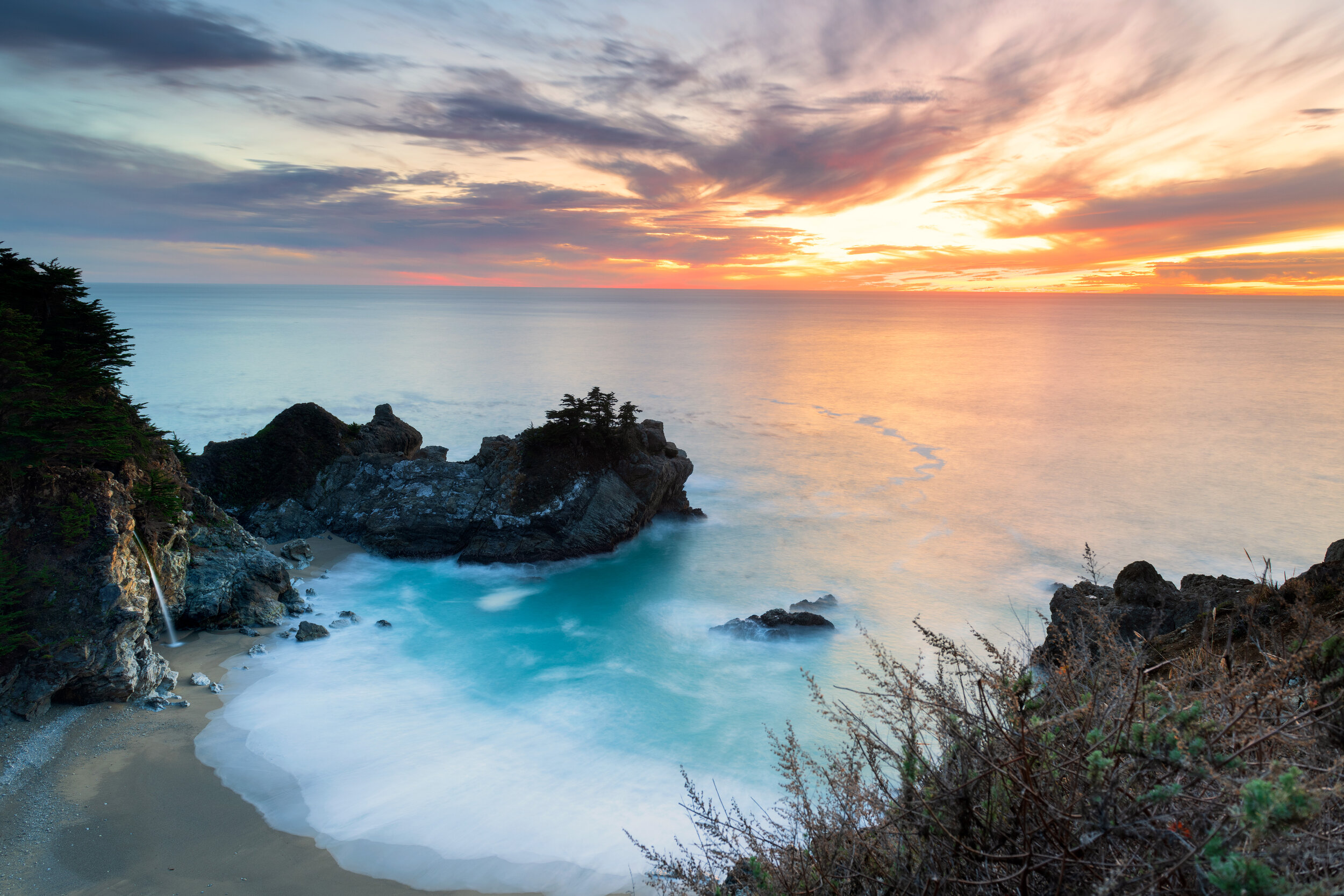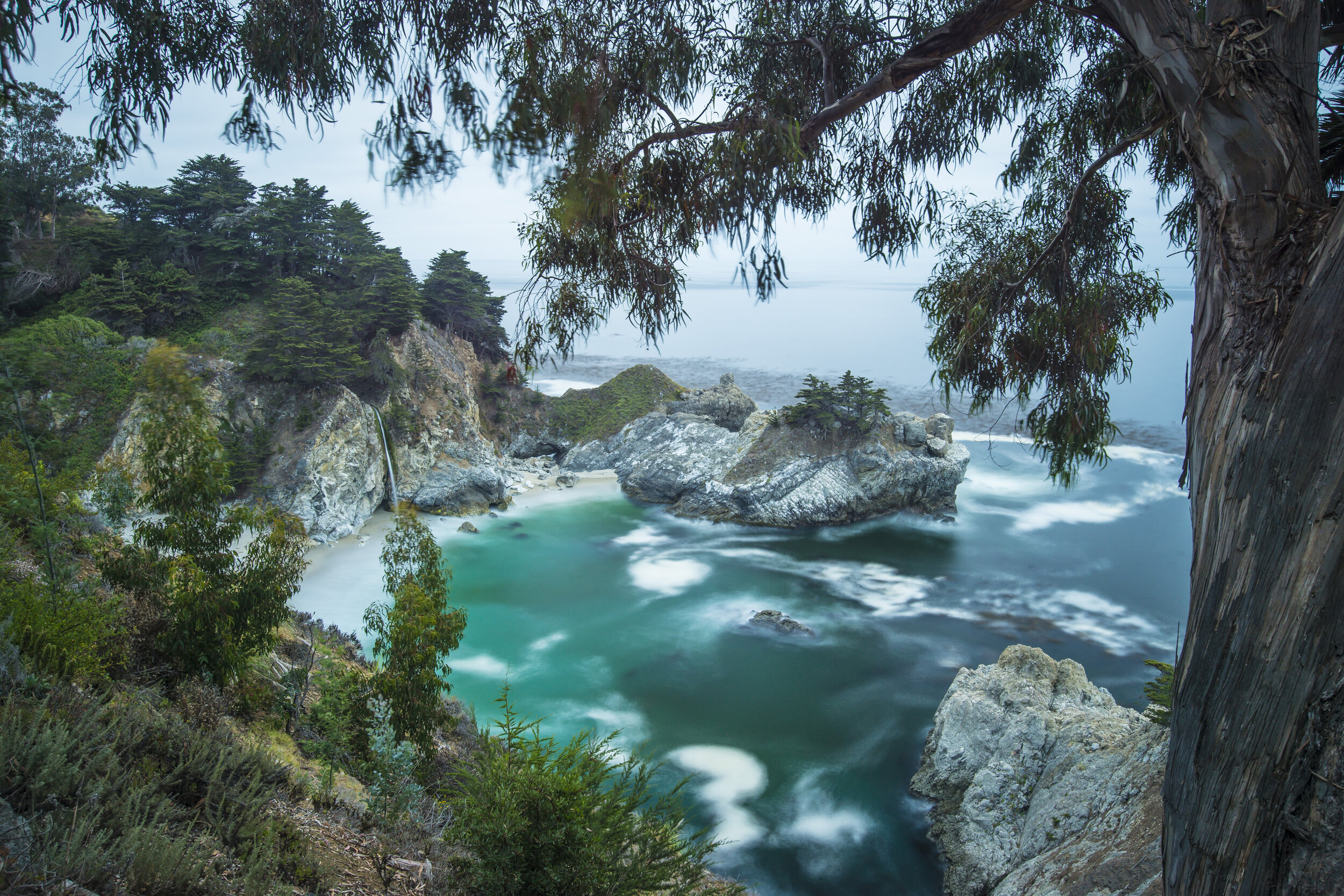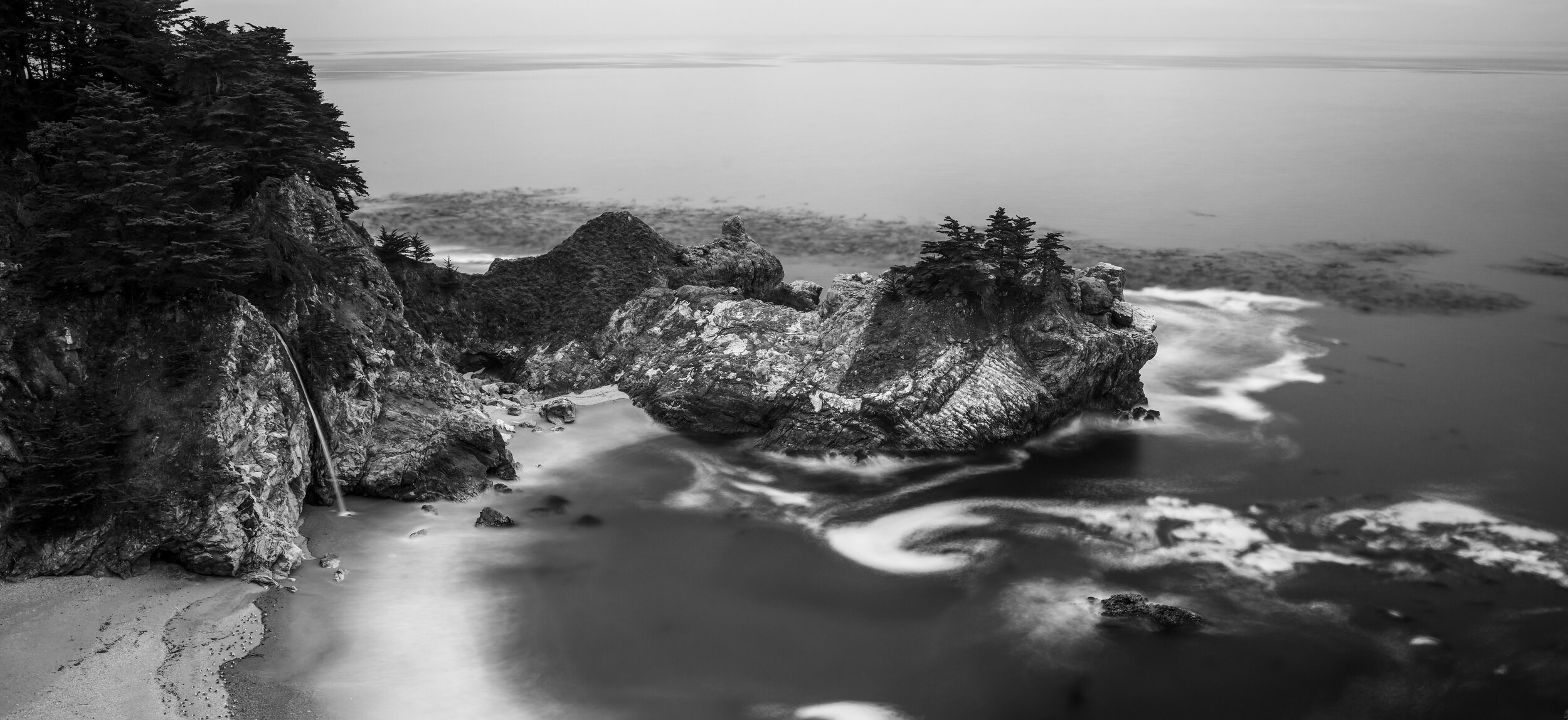When we first moved to California, I was somewhat surprised to learn that Big Sur was not a National Park. It is one of the most stunning locations I have ever visited, and it never ceases to amaze me. The first trip we did was just an exploratory trip, and we were hooked. But, there was a surprise waiting for us as the sunset got near. A thick layer of fog just came in as the evening drew closer and ruined any chance of a good sunset shot. We chalked it up as a bit of bad luck, but this happened again and again during the trip until I spend some time learning about California's marine layer. So basically, except in fall and winter, the marine layer will most definitely rule out any chance of colorful sunset shots.
One of the star attractions of the Big Sur trip has always been the stunning Mcway falls located at the Julia Pfieffer Burns State Park. The waterfall is unique due to a couple of reasons, it is one of the few waterfalls that empty directly into an ocean, and its located relatively close to Monterey bay and only a few steps from the Pacific coast highway. It is safe to say that the location is quite popular with tourists. I have captured some lovely images at this location but never managed a spectacular sunset or sunrise shot from here. Every single time I tried to land a sunset shot, it was either cloudy or foggy. Soon I become obsessed with a sunset shot of McWay falls.
After a bit of research, I soon realized the error of my ways. The relatively close location of the falls to Monterey means this waterfall is right at the beginning or towards the end of your Big Sur trip, assuming that you are starting from either Bay Area or LA. Planning for good light becomes difficult unless you are trying just to hit one location. Then there was the natural phenomenon called the marine layer, a thick layer of fog that rolls in around evening from the cold Pacific during warm months, killing chances of a beautiful sunset shoot at a location that is seemingly made for sunset photography.
After about four trips to the Big Sur coast, I realized that the winter months are the best time to visit the area. The only exception is if it's been raining as it can cause massive landslides. Even bigger of a challenge is to pick a site to concentrate on a trip. This area is just too large to cover in one trip, and breaking it up is the only way you can do justice to the site and its beautiful locations.
An especially bad day. The light was on the flat and boring side. I had to process the image as a black & white image to preserve some interestingness.
On my last visit, I leveraged all my accumulated knowledge about the central coast of California. We drove straight to the northernmost attractions of the Big Sur coastline and just stuck to three locations. We covered Point Lobos reserve, Garrapata State Park, and McWay Falls. Limiting your coverage like this gives you more time to create more intimate photos than otherwise possible. I had budgeted three whole days for the area. Unfortunately, while the conditions at the other locations were perfect, McWay falls had experienced a landslide, and park authorities have closed some areas restricting the access to the prime shooting spots. Still, I was super excited to shoot the image that I had in mind for such a long time. I had a decent place where I could position myself, and the fog was completely absent with some great clouds by the horizon.
The classic composition is pretty much the only one possible at this spot. While the compositional opportunities are limited, getting the conditions aligned to get a spectacular sunset shot is still a challenge. I should know it took me 7 years and multiple trips to the same location to nail the perfect conditions. All the necessary elements came together to make up for the closed trail by giving us one of the most spectacular sunsets we have ever seen. I was so excited to get a colorful shot here finally, and in the end, it was all worth it.







